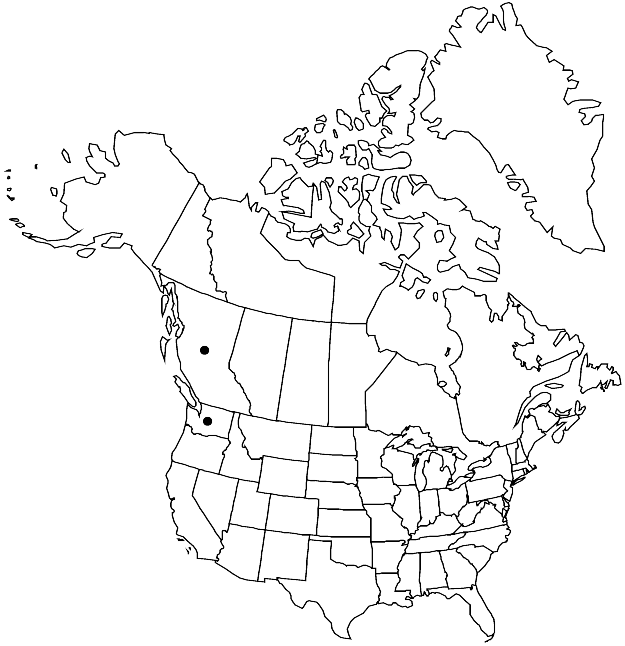Difference between revisions of "Sandbergia whitedii"
Leafl. Bot. Observ. Crit. 2: 137. 1911.
FNA>Volume Importer |
imported>Volume Importer |
||
| (5 intermediate revisions by 2 users not shown) | |||
| Line 7: | Line 7: | ||
|year=1911 | |year=1911 | ||
}} | }} | ||
| − | |basionyms={{Treatment/ID/ | + | |basionyms={{Treatment/ID/Basionym |
|name=Arabis whitedii | |name=Arabis whitedii | ||
|authority=Piper | |authority=Piper | ||
| + | |rank=species | ||
| + | |publication_title=Bull. Torrey Bot. Club | ||
| + | |publication_place=28: 39. 1901 | ||
}} | }} | ||
|synonyms={{Treatment/ID/Synonym | |synonyms={{Treatment/ID/Synonym | ||
|name=Halimolobos whitedii | |name=Halimolobos whitedii | ||
|authority=(Piper) Rollins | |authority=(Piper) Rollins | ||
| + | |rank=species | ||
}} | }} | ||
|hierarchy=Brassicaceae;Brassicaceae tribe Boechereae;Sandbergia;Sandbergia whitedii | |hierarchy=Brassicaceae;Brassicaceae tribe Boechereae;Sandbergia;Sandbergia whitedii | ||
| Line 38: | Line 42: | ||
-->{{#Taxon: | -->{{#Taxon: | ||
name=Sandbergia whitedii | name=Sandbergia whitedii | ||
| − | |||
|authority=(Piper) Greene | |authority=(Piper) Greene | ||
|rank=species | |rank=species | ||
| Line 53: | Line 56: | ||
|publication year=1911 | |publication year=1911 | ||
|special status= | |special status= | ||
| − | |source xml=https:// | + | |source xml=https://bitbucket.org/aafc-mbb/fna-data-curation/src/2e0870ddd59836b60bcf96646a41e87ea5a5943a/coarse_grained_fna_xml/V7/V7_615.xml |
|tribe=Brassicaceae tribe Boechereae | |tribe=Brassicaceae tribe Boechereae | ||
|genus=Sandbergia | |genus=Sandbergia | ||
Latest revision as of 22:35, 5 November 2020
Perennials; densely and uniformly pubescent, trichomes shortly stalked, minute, Y-shaped or cruciform, mixed with simple or 1 or more ray-forked ones. Stems simple or few from caudex, erect, branched (several) distally, (1.5–)2.5–5.5(–6.5) dm, densely pubescent throughout. Basal leaves often rosulate; petiole (1–)2–5(–7) cm; blade spatulate to linear-oblanceolate, (1–)1.7–5 cm × (3–)4–9(–12) mm, margins entire or dentate, surfaces densely pubescent. Cauline leaves 3–7 (widely spaced); blade linear-oblanceolate, 2–7 cm × 1–5(–8) mm, margins usually entire, rarely minutely sparsely denticulate, apex obtuse, surfaces densely pubescent. Fruiting pedicels (5–)8–14(–17) mm, densely pubescent. Flowers: sepals 2.5–3 × 1–1.5 mm; petals (4–)5–6.5(–7.5) × (1.2–)1.5–2(–2.2) mm; filaments 1.5–3 mm; anthers oblong, 0.6–0.8 mm. Fruits suberect, (not appressed to rachis), straight, slightly torulose, subterete, (1–)1.3–1.8(–2) cm × 0.8–1 mm; valves each with obscure midvein on proximal 1/2, densely pubescent; ovules 20–30 per ovary; style 0.2–0.4 mm. Seeds 1–1.2 × 0.6–0.7 mm.
Phenology: Flowering Apr–Jul.
Habitat: Dry sagebrush scabland, gravelly hillsides, basaltic talus, dry sandy slopes, alpine meadows, cliffs, ridge crests
Elevation: 500-1200 m
Discussion
In Washington state, Sandbergia whitedii appears to be restricted to Chelan, Douglas, Grant, Kittitas, Lincoln, and Okanogan counties.
Selected References
None.
